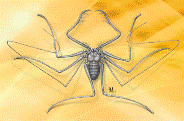Papers in the Biological Sciences

Eileen Hebets Publications
Document Type
Article
Date of this Version
8-1-2008
Abstract
Most studies of female choice have assumed that mating preferences are shared within a population or species. However, variation both within and among females exists in natural populations, and foraging history is among the many ways in which females may vary. Here, we used diet manipulations in an effort to understand how foraging history influences female mate choice. Immature Schizocosa wolf spiders collected from a mixed population of brush-legged and non-ornamented males were reared in the laboratory on two diets that varied in both quality and quantity (low/high diet). For low- and high-diet individuals, we recorded data on rates of development, adult size and adult mate choice. Consistent with previous work, we found that high-diet spiders matured more quickly and were significantly larger as adults than low-diet spiders. Males also matured earlier than females. Body condition varied with diet treatment and sex. High-diet individuals and females were both characterized by better body condition indexes. In addition, high-diet brush-legged males had larger brushes than low-diet brush-legged males. Upon maturation, females were paired simultaneously with a low- and a high-diet male of the same form (brush-legged or non-ornamented) in a mate choice trial. While no obvious differences were observed in courtship and/or mating effort between males, female mate choice varied with the female’s diet treatment. High-diet females mated more frequently with high-diet males than with low-diet males, whereas low-diet females showed no selectivity.


Comments
Published in Animal Behaviour 76:2 (August 2008), pp. 355–363; doi 10.1016/j.anbehav.2007.12.021 Copyright © 2008 The Association for the Study of Animal Behaviour; published by Elsevier Ltd. http://www.sciencedirect.com/science/journal/00033472 Used by permission.